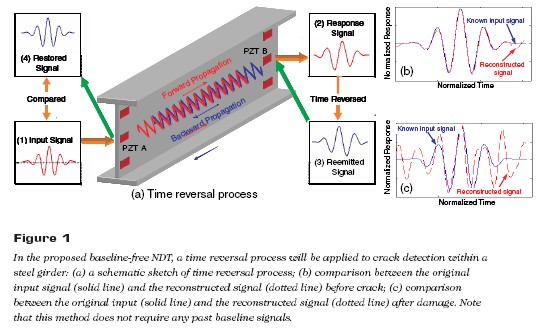This project develops a new concept of nondestructive testing (NDT), in which damage can be detected without using past baseline data. In particular, an NDT methodology is formulated for detecting cracks in steel girders commonly used in bridges. This novel concept is further extended to develop an NDT system that can be instantly deployed to in-field structures and autonomously diagnose local damage under the operational and environmental variations that bridges encounter. Implementation issues are also investigated so that a monitoring system can be either permanently mounted for continuous online monitoring or repeatedly deployed for periodic inspection. This strategy offers potential for a significant breakthrough in SHM/NDT practice via the integration of active sensing, smart materials, statistical pattern recogni-tion techniques, and new theoretical development for damage diagnosis that has not been attempted to date. This field deployable NDT technique is unique because (1) damage diagnosis can be accomplished without relying on prior reference data, (2) the monitoring system will have its own “intelligence” that autonomously converts real-time sensor data to damage diagnosis information without requiring the prior baseline data, (3) the noninvasive and costeffective active sensing device can be instantly deployed to and removed from a target structure, and (4) environmental and operational variations that in-service structures experience will not affect damage diagnosis, minimizing false indications of damage.The final report is available from the National Technical Information Service (NTIS # PB2007-109637).
